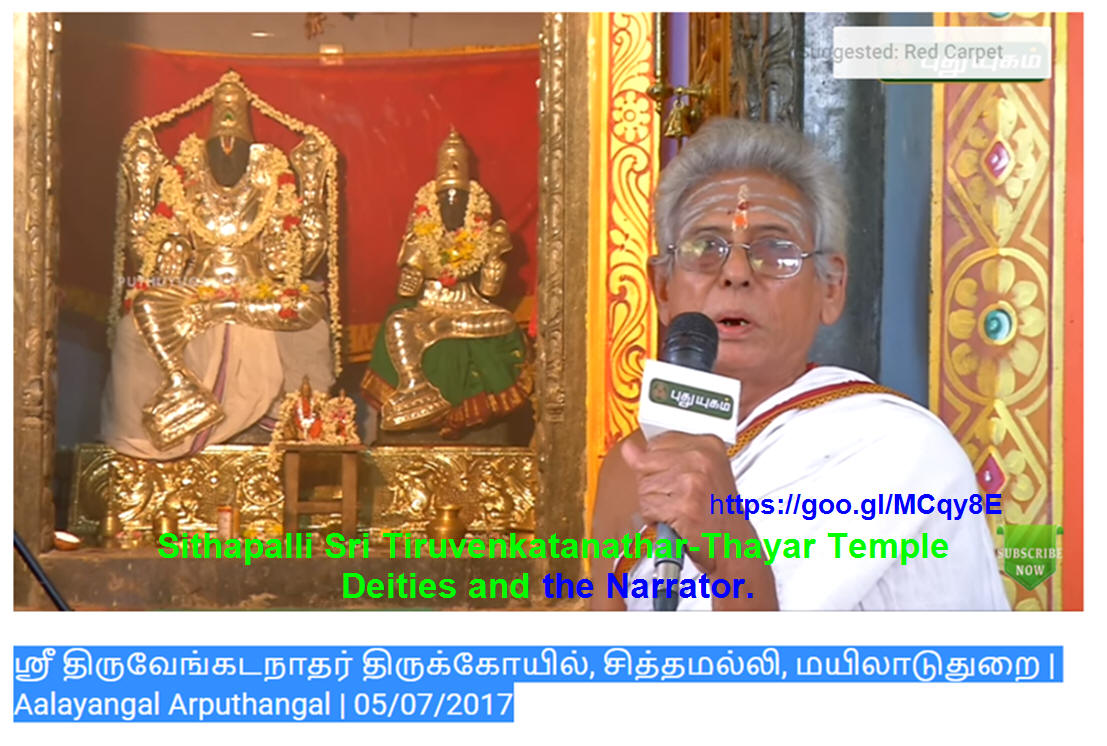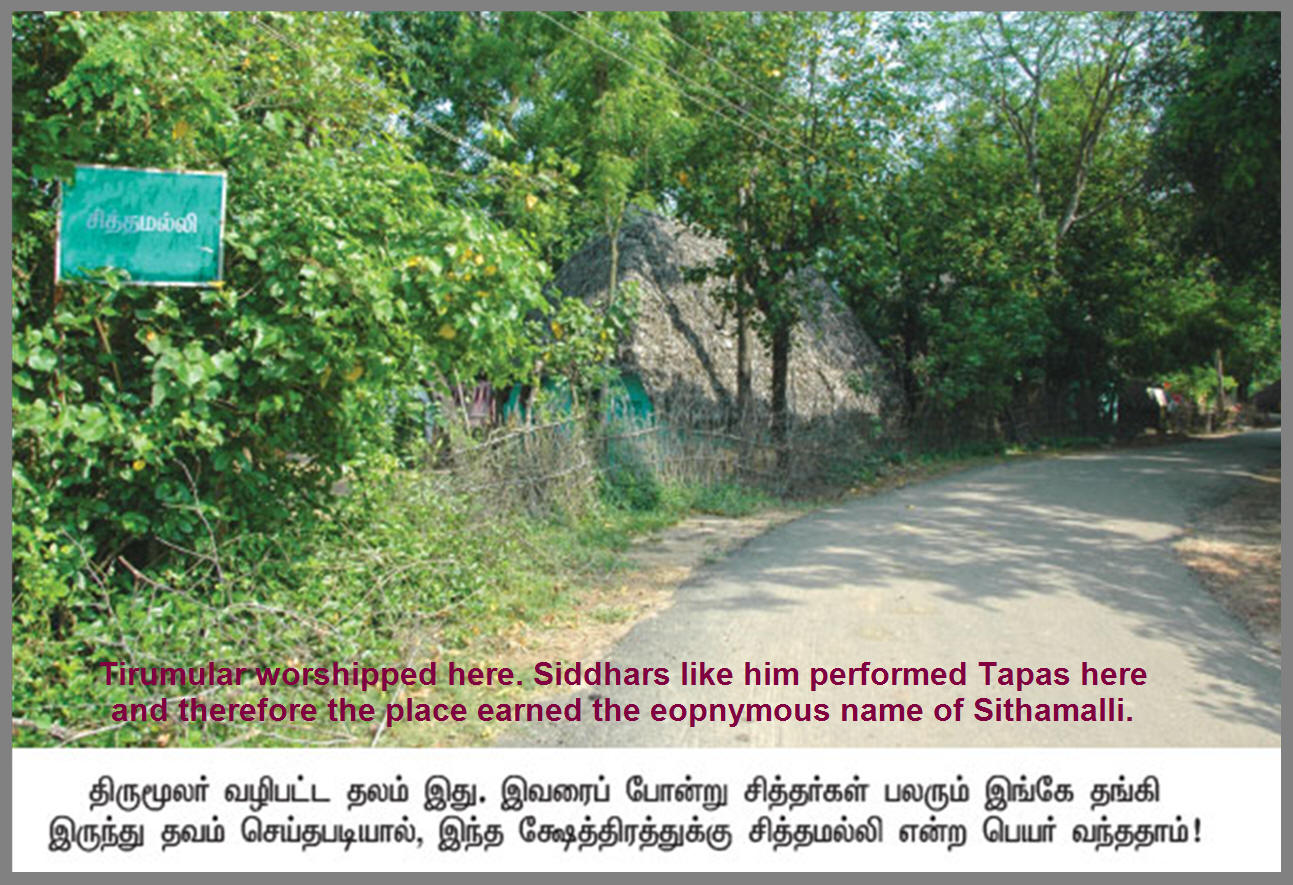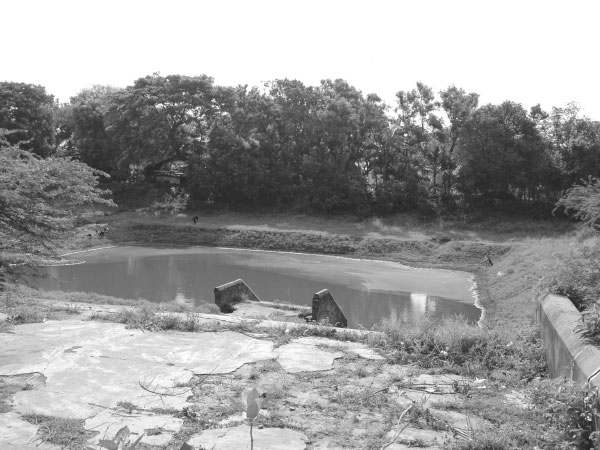SithamalliOnMyMind01
Sithamalli on the mind
goo.gl/D4Vxyr
Synopsis
Sithamalli is a village in Tamil Nadu. An embodied soul, jostled by
life's trials and tribulations, was angry with God. He took the idols
from inside the house and unceremoniously dumped them in the backyard.
Over a few centuries, the idols sank in the backyard under the weight of
accumulating mud. The idols were forgotten and led a subterranean life
for centuries.
Fast forward a few centuries.
Sundaranarayanan planned to raise vegetables in the backyard and the
workers dug the backyard. The crowbar hit something hard. They dug
around it and found two idols, Perumāḷ and Thāyār, who were worshipped
by his ancestors.
The owner of the house and the backyard is Sundaranarayanan (SN), an
atheist. He kept the idols in the backyard, not wanting to give them a
home or a temple. The idols were drenched by rain, scorched by sun, and
buffeted by winds. And yet SN was stubborn.
Perumāḷ by his Divine Will converted the atheist SN to theist and made
him build a temple for him and Thāyār. There were miracles, oracles,
life-changing incidents, a whole lot of unlucky people made whole by
Perumāḷ… For all this, it should be a tale. Not so.
His (SN) male ancestor was the man who caused burial of the idols. His
sister from centuries ago was reborn in another family as Padmā Māmi.
Perumāḷ played Divine Sports with these two souls and used them to build
a temple.
Nivethitha
Sithamalli village was the crossroad of Siddhars (the supernals). The
sacred ground was to earn grace, gleam and glow for all times
(in the future).
This is where the greats and the Siddhars performed their inimitable
acts of grace.
This place, until a few years ago, was a shrine populated by more than a
hundred Vedic scholars (Pundits). It stood on the road going from
Vaithīsvaran Temple in Nagapattinam Division to Mayiladuthurai. It was
the solemn words of grace by a Mahan that this village will acquire
world fame.
This site is in a peaceful natural environment, south of Kollidam river
a northbound tributary of Kaviri, which earns the reputation equal to
that of Kasi. Kanchi Mahaswamy visited this sacred place.
Tradition says, Tirumular stayed here, worshipping Kailasanathar. Oral
history says many Siddhars performed Tapas here and the village was
called eponymously Sithamalli
We will later discuss the Mahan and the woman devotee who heard his
oracle of the future greatness of Sithamalli. Let us dwell now on an
incident that happened about 500 years ago.
A youth and Vedic scholar noted for his erudition, accomplishment, and
recitation of Mantras according to injunctions… left his wife and son in
the village for Kumbakonam, famous for Vedic scholars. Sporting shabby
and crumpled clothes and a lean famished body, the Vedic scholar saw
distribution of free food to Vedic Brahmins and his hunger forced him to
seek food there. Whenever
Samārāthaṉai
(feeding of Brahmins)
takes place in a village, the Vedic pundits are privileged to
participate (dine). No one makes an objection. The head of the household
being the village chief and the sponsor of the event blocked his entry
seeing his crumpled clothes and weak body and made him stay outside. The
Vedic chanting ended and the participants took their seating for meals.
The youth also joined them but was blocked again to sit down and eat.
The sponsor sent him to the back of the house and asked him to grind and
prepare sandalwood paste for use by the Brahmins on the body. The youth
went to the back of the house and prepared the sandalwood paste. During
the grinding process he chanted Mantras.
The sandalwood paste was ready as the Vedic scholars finished eating.
The sponsor ordered the youth to bring the paste to them. So, it was
done. The participants smeared the paste on their bodies with glee and
gusto. Soon their bodies felt warm and later they felt their bodies were
on fire. Bubbles and blisters appeared on the bodies. They were in
agonizing pain. The sponsor called the youth and demanded an explanation
with the promise and threat of bodily harm.
The youth stopped for a moment and went over in his mind all the steps
he followed while preparing the sandalwood paste. He realized the
scalding of the body resulted from the recitation of
Agnisuktam during his
grinding stint. Receiving the leftover paste, he grinded it again
reciting Varunasuktam and
asked the Vedic dinner guests to smear the reground paste on their
bodies. They smeared the paste as advised by the still famished village
scholar. Lo and behold. The fiery bodies immediately cooled down and the
bumps and blisters simply vanished.
(Agnisuktam [= Hymn of
Praise of Fire-god].
(Varunasuktam
[= Hymn of praise of god of ocean]
The Vedic Pundits, knowing and experiencing the power of the famished
youth to inflame and cool down their bodies by recitation of the Suktas,
felt a sense of wonder and a plethora of respect and paid homage to
still hungry magical youth. The sponsor of the event was seized with
fear for disrespecting a Mahan, whom he mistook for a penurious sad
sack. He fell at his feet in an eight-limb prostration, paid homage to
him, took him inside, played a respectful host, fed him, gave him new
clothes and gold coins and sent him on his way.
This youth of such power in later years received recognition as a Mahan.
He gave whatever people wanted in the spirit of the Wish-Tree. He told a
woman devotee in the spirit of an Oracle that Sithamalli would become
famous in the world soon.
The Mahan gave Dharsan to his fellow villager at dusk and told him that
the Sithamalli village would become famous and pointed a site as the
point of fame, name and welcome.
His attitude changed after his experience of supernatural experience.
Who is that Mahan?
What is the power of the spot he pointed to his fellow villager?
Come all to Sithamalli.
Your body, mind and soul: Are they ready for a jolt with horripilation?


